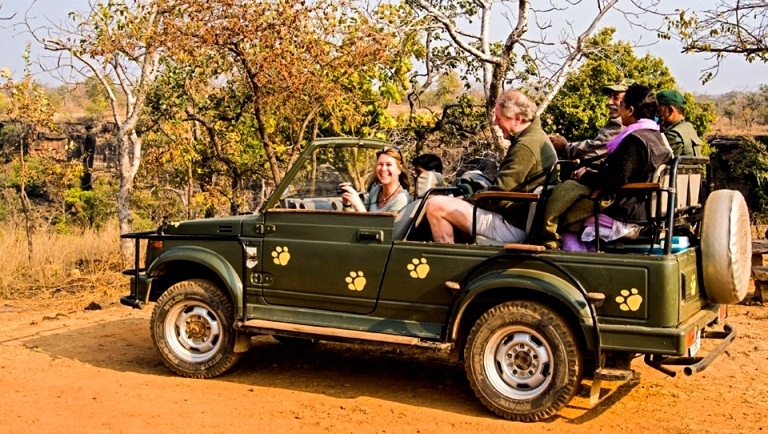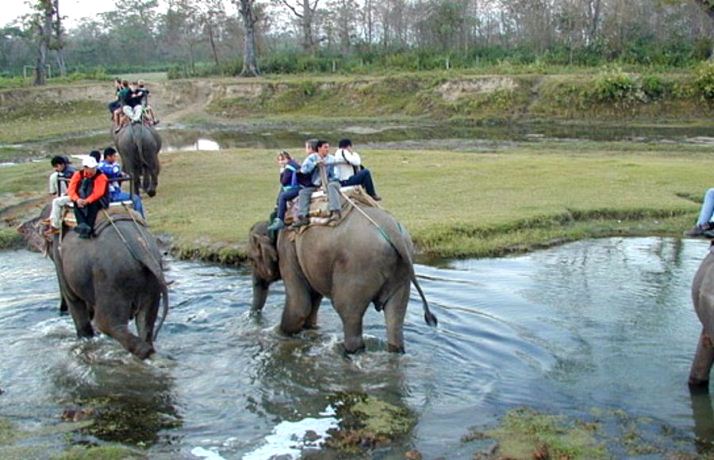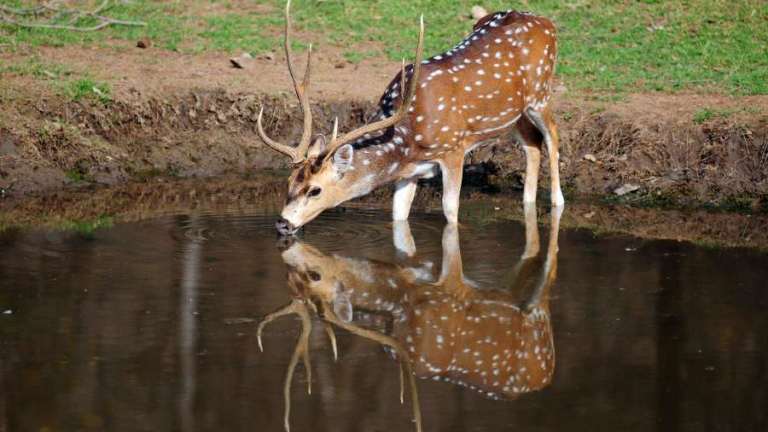
About Panna National Park- Panna National Park is situated in the central Indian state of Madhya Pradesh,at a distance of around 57 km from Khajuraho. The region, famous for its diamond industry, is also home to some of the best wildlife species in India and is one of the most famous Tiger Reserves in the country. The park is known worldwide for its wild cats, including tigers as well as deer and antelope. Due to its closeness to one of the best-known Indian tourist attraction in India, Khajuraho, the park is recognized as an exciting stop-over destination.
The climate of the region is tropical. Summers, somewhat scorching, are when one has the maximum chances of encountering the exclusive wildlife of this park. Winters are cold and comfortable and the temperature generally remains under 25°C. Monsoon touches this region in July and continues till mid-September.
Wildlife Attractions in Panna National Park-Â Mammals-Tiger (Panthera tigris tigris), the king of the jungle, roams freely in this secure, though a bit small habitat along with his fellow beings - leopard (Panthera pardus), wild dog (Cuon alpinus), wolf (Canis lupus), hyaena (Hyaena hyaena), caracal (Felus caracal) and other smaller cats. Sloth bear has his most favourite home in the rock escarpments and undisturbed vales. The wooded areas are dotted with sambar, the largest of Indian deers, chital and chowsingha. One can easily see nilgai and chinkara in most open areas in the grasslands, specially on the periphery.
Avifauna- The avifauna comprises more than 200 species, including a host of migratory birds. One can see white necked stork, bareheaded goose, honey Buuzzard, King vulture, Blossom headed Parakeet, Paradise flycatcher, Slaty headed Scimitar babbler to name a few.
Reptiles
Variety of snakes, including the python and other reptiles are found here.
Flora Attractions- Dry and hot climate, in union with shallow Vindhyan soils has given rise to dry Teak and dry mixed forest. The dominating vegetation type is miscellaneous dry deciduous forest inter spread with grassland areas. Other major forest types are riverines, open grasslands, open woodlands with tall grasses and thorny woodlands. The characteristic floral species of this area include tree species such as Tectona grandis, Diospyros melanoxylon, Madhuca indica, Buchnania latifolia, Anogeissus latifolia, Anogeissus pendula, Lannea coromandelica, Bosswelia serrata etc.
Safaris- There are no jeeps provided by the authorities, so you will have to rent your own jeep for a safari into the park. An hour long boat ride offered by the park authorities is a good option to catch a glimpse of water predators and other animals around the lake. Elephant safari is one of your best bets to spot a striped beast up close. A major attraction is the night safari at Gangau offered by the Ken River Lodge. Safari Timings are 6:30 to 10:30 AM & 2:30 to 5:30 PM.
How to Get There
By Air- The nearest airport is Khajuraho. Jet Airways flies from Delhi (10:40) to Khajuraho via Varanasi. To reach Khajuraho from other major cities, fly to Varanasi and catch a connecting flight from there. Indian Airlines flies Delhi-Varanasi daily at 11:40 and Mumbai-Varanasi daily at 8:00.
By Bus- The nearest bus stand is Panna connected to Khajuraho and many other places in Madhya Pradesh by a good road network. Madla, at a distance of around 24 km south west of Khajuraho, is a good transport centre. One can get buses and other road transport modes from here to the Panna National Park. To reach by road from Delhi, take the NH2 to Agra, NH3 to Gwalior, NH75 to Panna via Jhansi, Bamitha and Madla.
Travel Tips/Important Information
- Most safaris into the park start from the Madla village. The entrance on the eastern side is from Hindouta, located at an approachable distance from the Panna diamond mines.
- Park charges Entry Fee : Rs. 40 (Indians) & Rs. 500 (foreigners, including morning and afternoon safaris), Jeep rental : Rs. 1500/half day, Camera : Rs. 40 (still) & Rs. 200 (video), Guide : Rs. 100/vehicle, Private vehicle entry : Rs. 150, Boat Ride :Rs. 150 (Indians, 1-5 pax) & Rs. 150/person (foreigners), Elephant safari : Rs. 100 (Indians) & Rs. 600 (foreigners), Night Safari : Rs. 1800/jeep (including entry fees).
- Park timings are 6:30 to 10:30 AM & 2:30 to 5:30 PM.
- If you can stand the heat, it is recommended to visit the park during summer months as it is the best time to spot animals.
- Check on the timings and reach half an hour early before park gates open to complete the required formalities.
- Follow the rules of the park and do not venture into restricted areas.
- Do not try and feed the animals and avoid wearing flashy colors that could attract the wild animals.
- Do not litter, carry all the garbage outside the park and dispose off in a suitable area.
- Price can be changed without any prior notice.
Need Aspark Help?
For Tour Packages, Vehicle Rental and Customer Care Support.
+91 9999 31 7846
booking@asparkholidays.comWhy Travel with Us?

Excellent Support
Our Team Available 24x7 for Customer support
Best Price & Savings
We Offer the Most Competitive Prices.


